What Happened When Halley’s Comet Came?
Halley’s Comet, a short-period comet visible from Earth approximately every 76 years, has been documented throughout history, often coinciding with notable world events. Its appearances provide a unique timeline to explore historical contexts.
Each appearance of Halley’s Comet serves as a historical marker, allowing us to reflect on human progress, technological advancements, and the shifting geopolitical landscape. While the comet itself is a natural phenomenon, its periodic return to the night sky provides a backdrop against which humanity’s challenges and achievements can be measured.
Halley’s Comet has been observed for millennia, with records dating back to at least 240 BC. Its appearances have often been interpreted as omens and have coincided with significant historical events.
Let’s explore notable occurrences around the times of Halley’s Comet appearances before the 20th century:
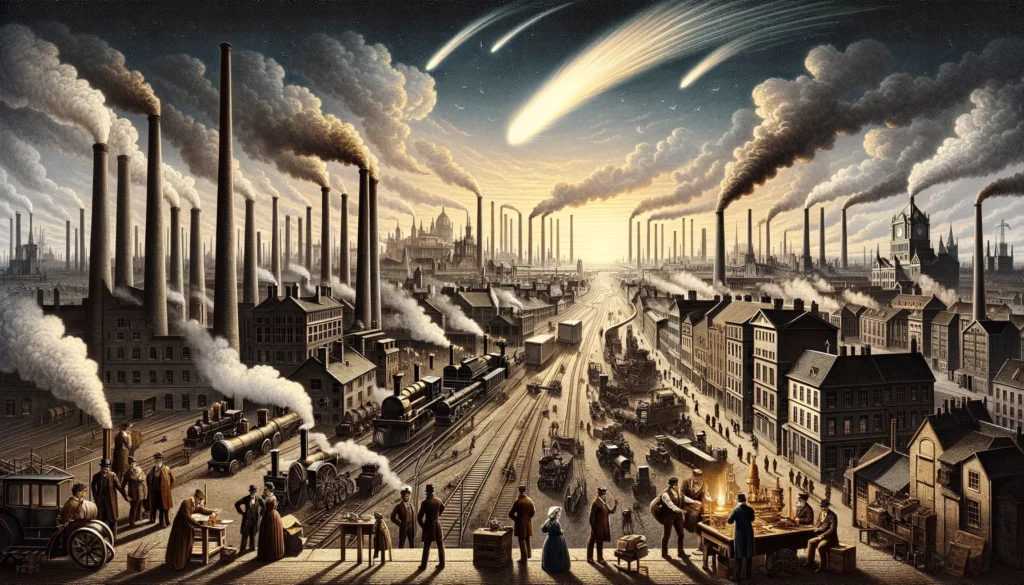
1835 Appearance
- Scientific Advancements: Just before this appearance, in 1833, the first electric telegraph was demonstrated, paving the way for rapid communication over long distances.
- Andrew Jackson’s Presidency: In the United States, Andrew Jackson was serving as President during this period, marked by significant political and social change, including issues related to states’ rights and the bank war.
1759 Appearance
- Seven Years’ War (1756-1763): This global conflict, also known as the French and Indian War in North America, was ongoing, shaping the geopolitical landscape of Europe, North America, and parts of Asia.
- The Enlightenment: This was a period of intellectual ferment leading to revolutions in America and France, with significant advancements in science, philosophy, and human rights.
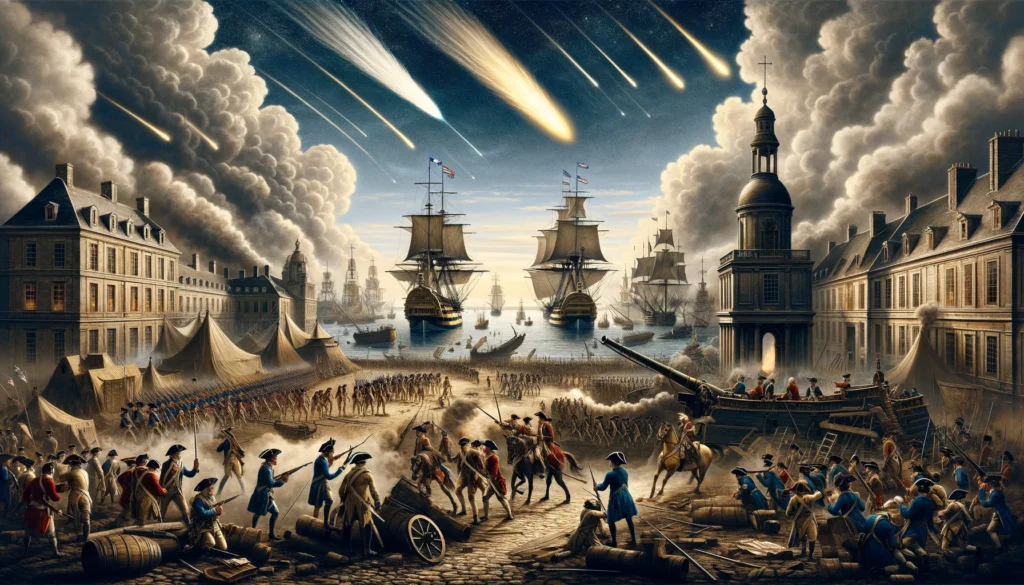
1682 Appearance
- The Glorious Revolution (1688): Shortly after the comet’s appearance, England experienced the Glorious Revolution, which led to the overthrow of King James II in favor of William III and Mary II, significantly impacting the political landscape of England and Scotland.
- Peter the Great’s Reign: In Russia, Peter the Great was coming into power, leading to extensive reforms that modernized Russia.
1607 Appearance
- Jamestown Settlement (1607): The establishment of Jamestown, the first permanent English settlement in the Americas, coincided with Halley’s Comet’s appearance.
- The Beginning of the End for the Ottoman Empire: The early 17th century saw the Ottoman Empire’s stagnation and gradual decline begin, after a period of vast expansion and dominance in the Mediterranean.
1531 Appearance
- Reformation: This period was marked by the Protestant Reformation, which began in 1517 when Martin Luther published his 95 Theses, challenging the Roman Catholic Church and leading to widespread religious reform and conflict across Europe.
- The Age of Exploration: European exploration continued to flourish, with expeditions leading to the discovery of new lands and sea routes, including those by Magellan whose expedition (1519-1522) became the first to circumnavigate the Earth.
1456 Appearance
- The Fall of Constantinople (1453): Just a few years before the comet’s appearance, the Ottoman Empire captured Constantinople, marking the end of the Byzantine Empire and significantly impacting European and Middle Eastern history.
- The Printing Press: Around this time, Johannes Gutenberg was developing the printing press, which would revolutionize the spread of information, facilitating the Renaissance and later the Reformation.
Each appearance of Halley’s Comet is a reminder of humanity’s enduring fascination with the cosmos, serving as a celestial landmark around which we can frame our historical narratives. The comet’s journey through the solar system has been witnessed by countless generations, each interpreting its significance in the context of their era’s triumphs, tragedies, and transitions.
Continuing further back in time, let’s explore events around earlier appearances of Halley’s Comet, which has been recorded by astronomers and historians for over two millennia. Its appearances are fascinating snapshots of human history, marking periods of significant change, discovery, and development.
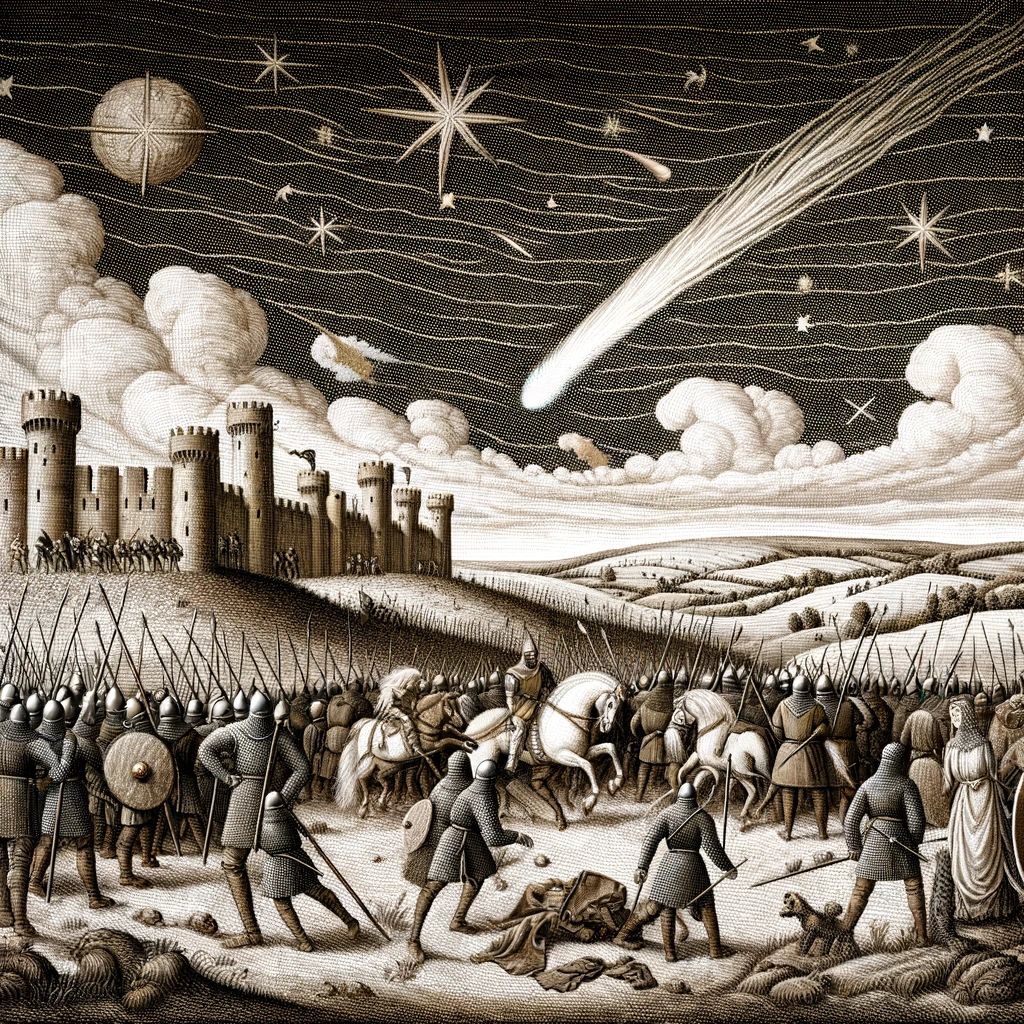
1066 Appearance
- The Battle of Hastings: Perhaps one of the most famous historical events associated with Halley’s Comet is the Norman Conquest of England in 1066. The comet was recorded in the Bayeux Tapestry, an embroidered cloth depicting the events leading up to the Norman conquest of England, including an image of the comet, which was seen as an omen.
- Establishment of the Norman Rule in England: The victory of William the Conqueror at the Battle of Hastings led to significant changes in English culture, language, and governance, many of which have lasted to the present day.
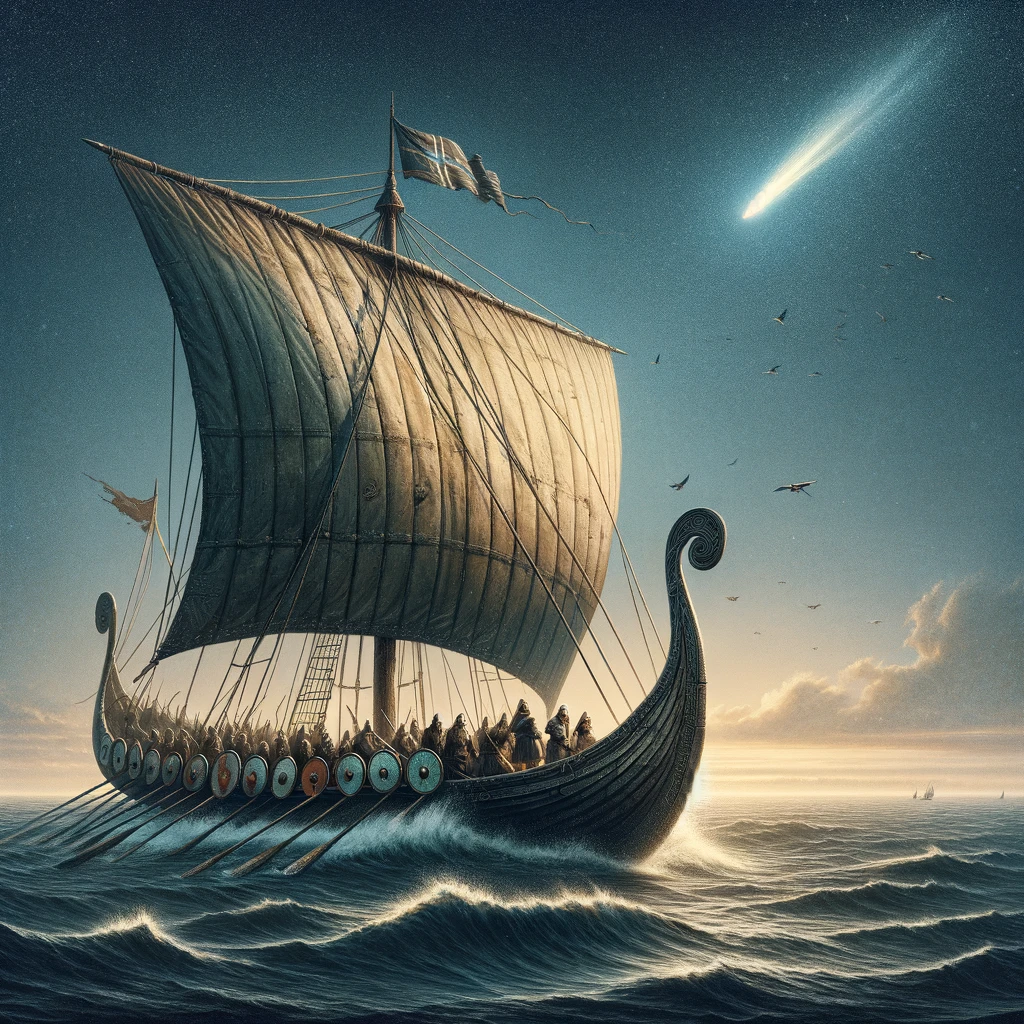
989 Appearance
- The Viking Age: This period was near the height of the Viking Age, where Norse seafarers were active in raiding, trading, and settling across wide areas of Europe, and even reaching North America.
- Early Medieval Period: Europe was in the early part of the Medieval Period, marked by feudalism, the spread of Christianity, and the formation of the foundations of modern European states.
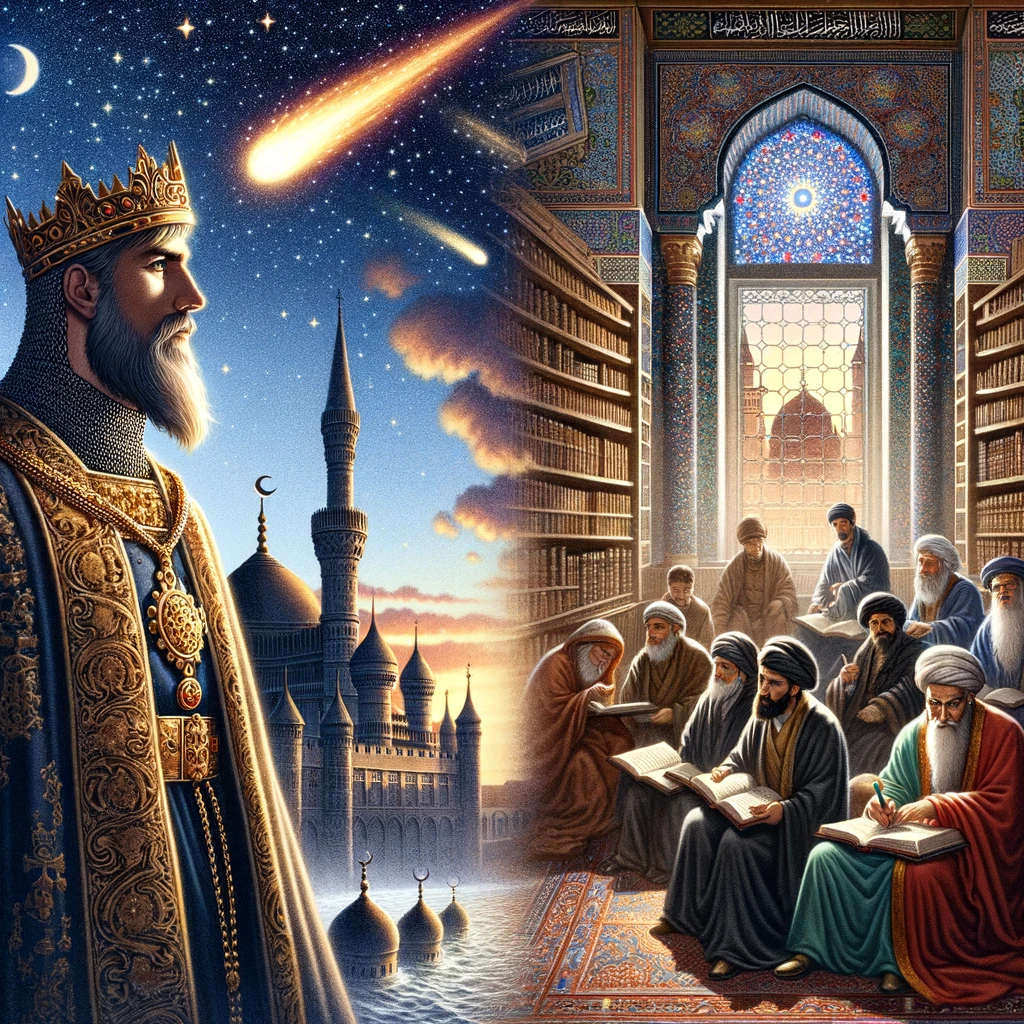
837 Appearance
- The Carolingian Empire: In Europe, the Carolingian Empire under the rule of Louis the Pious was experiencing internal divisions and the beginning of what would later become the feudal system.
- The Golden Age of Islam: This was also a period during the Islamic Golden Age, characterized by significant achievements in science, technology, medicine, and philosophy in the Muslim world.
760 Appearance
- Tang Dynasty in China: The Tang Dynasty, considered a golden age of Chinese civilization, was flourishing, with advances in technology, culture, and trade along the Silk Road.
- The Byzantine Iconoclasm: Around this time, the Byzantine Empire was undergoing the period of Iconoclasm, where religious images or icons were destroyed or banned, reflecting deeper theological and political conflicts within the empire.
684 Appearance
- Expansion of the Umayyad Caliphate: The Umayyad Caliphate was at its zenith, having expanded rapidly across the Middle East, North Africa, and into the Iberian Peninsula, spreading Islam and influencing various cultures and societies.
- Anglo-Saxon England: This period saw the consolidation of power among various Anglo-Saxon kingdoms in what is now England, with increasing Viking raids towards the end of the century.
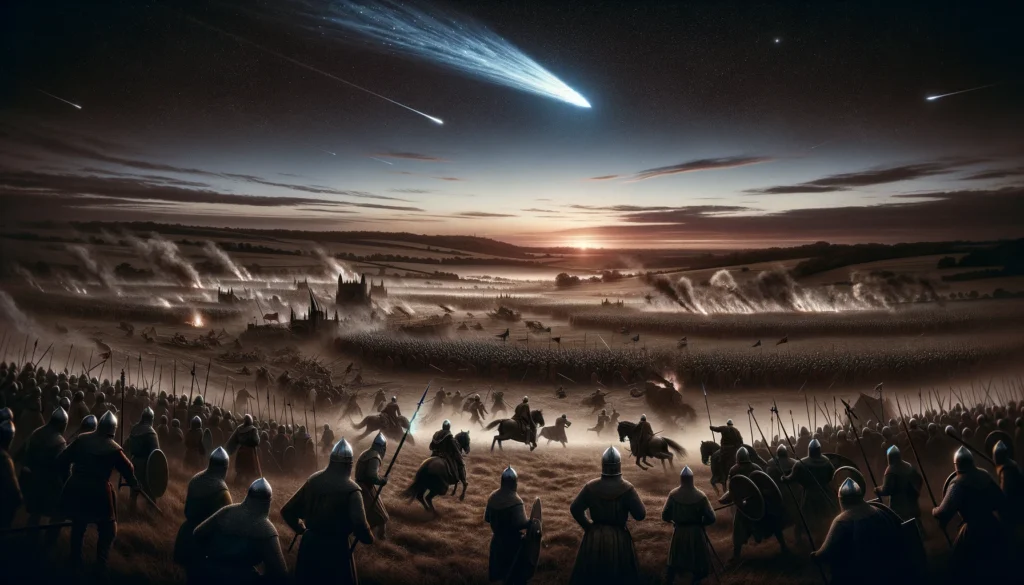
607 Appearance
- Sui to Tang Dynasty Transition in China: The transition from the Sui to the Tang Dynasty, one of the most significant periods of change in Chinese history, leading to the Tang Dynasty’s establishment and a period of prosperity and cultural achievement.
- Spread of Christianity: In Europe, Christianity was spreading into new areas, laying the groundwork for the medieval Christian kingdoms.
Halley’s Comet’s appearances serve as milestones around which we can frame the human story, from the rise and fall of empires to the profound shifts in culture, technology, and religion that have shaped our world. Its regular return to the night sky offers a reminder of the continuity of history and the shared human fascination with the cosmos.
Here are some significant global events that occurred around the times Halley’s Comet made its appearances in the 20th and 21st centuries:
1910 Appearance
- Technological Advances: This period was marked by rapid technological progress, including the widespread adoption of automobiles and the beginning of aviation history. The Wright brothers had made their first powered flight just seven years earlier, in 1903.
- Political Changes: Many countries were experiencing significant political changes. For example, the Mexican Revolution began in 1910, marking the start of a decade-long struggle for a more equitable distribution of land and power in Mexico.
1986 Appearance
- Chernobyl Disaster (1986): The worst nuclear power plant accident in history occurred in the Soviet Union, significantly impacting nuclear power policies worldwide.
- Space Shuttle Challenger Disaster (1986): The NASA Space Shuttle Challenger broke apart 73 seconds after liftoff, deeply affecting space exploration and leading to major safety overhauls in NASA’s space shuttle program.
- End of the Cold War Era: The mid to late 1980s was a period that saw the beginning of the end of the Cold War, highlighted by the increased diplomacy between the Soviet Union under Mikhail Gorbachev and the West.

Anticipated 2061 Appearance
Looking ahead, Halley’s Comet is expected to return in 2061. While we can’t predict specific events, we can speculate on themes such as:
- Technological Advancements: Continued advancements in technology, especially in AI, biotechnology, and space exploration, are likely.
- Climate Change: Ongoing efforts and potentially significant developments in combating climate change.
- Global Politics: The geopolitical landscape may see shifts as emerging powers rise and global challenges necessitate international cooperation.










